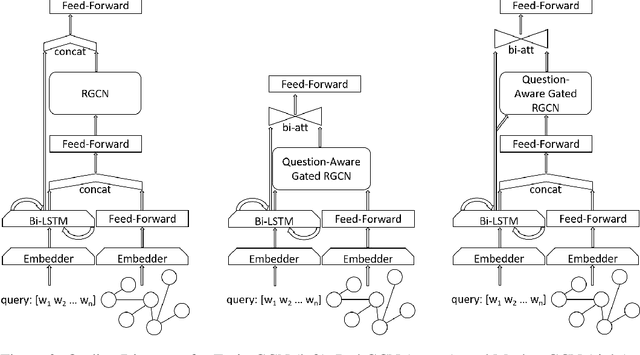Relational Graph Convolutional Neural Networks for Multihop Reasoning: A Comparative Study
Paper and Code
Oct 13, 2022



Multihop Question Answering is a complex Natural Language Processing task that requires multiple steps of reasoning to find the correct answer to a given question. Previous research has explored the use of models based on Graph Neural Networks for tackling this task. Various architectures have been proposed, including Relational Graph Convolutional Networks (RGCN). For these many node types and relations between them have been introduced, such as simple entity co-occurrences, modelling coreferences, or "reasoning paths" from questions to answers via intermediary entities. Nevertheless, a thoughtful analysis on which relations, node types, embeddings and architecture are the most beneficial for this task is still missing. In this paper we explore a number of RGCN-based Multihop QA models, graph relations, and node embeddings, and empirically explore the influence of each on Multihop QA performance on the WikiHop dataset.
 Add to Chrome
Add to Chrome Add to Firefox
Add to Firefox Add to Edge
Add to Edge